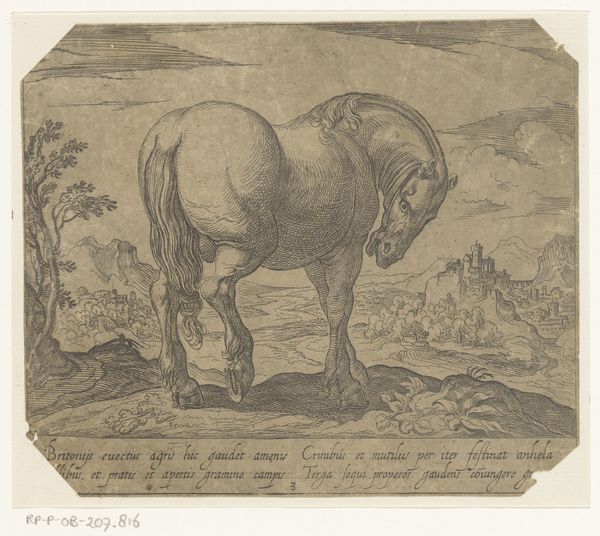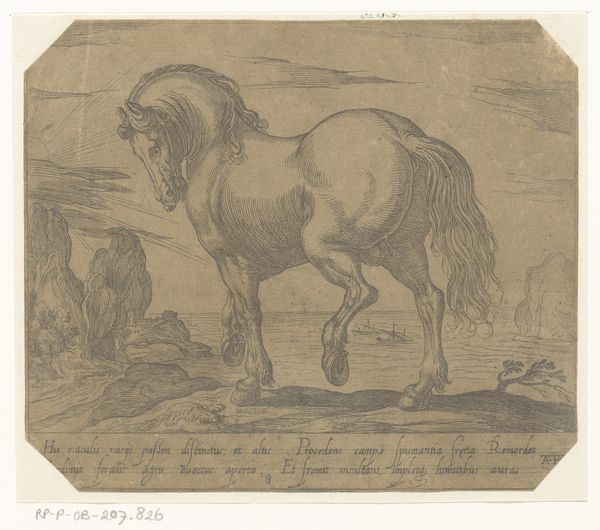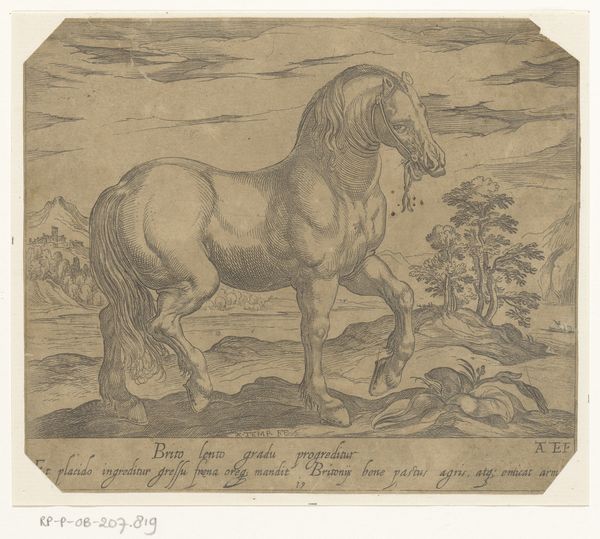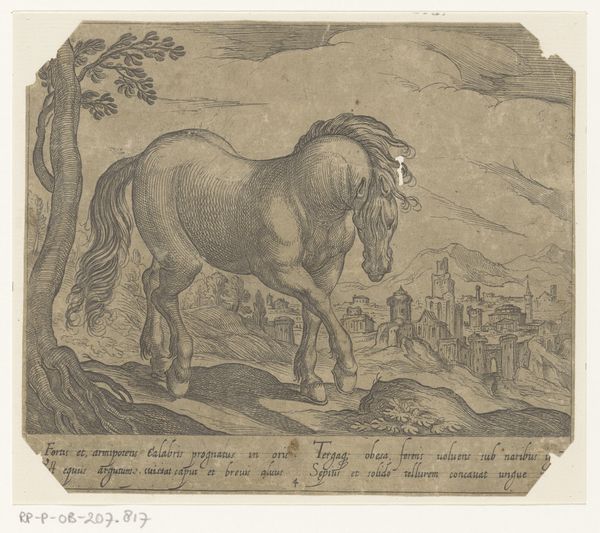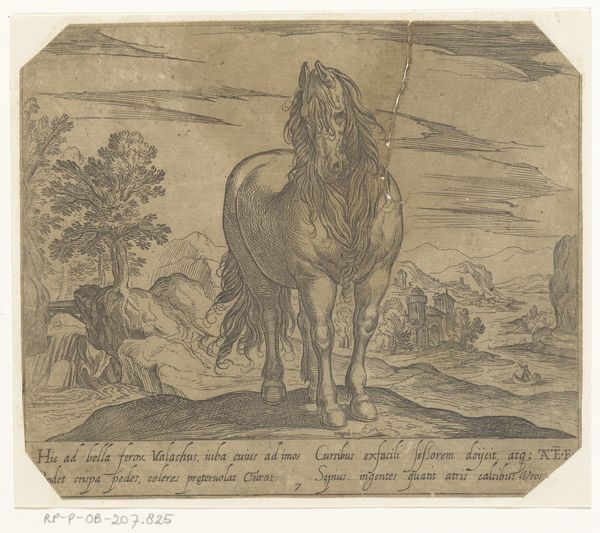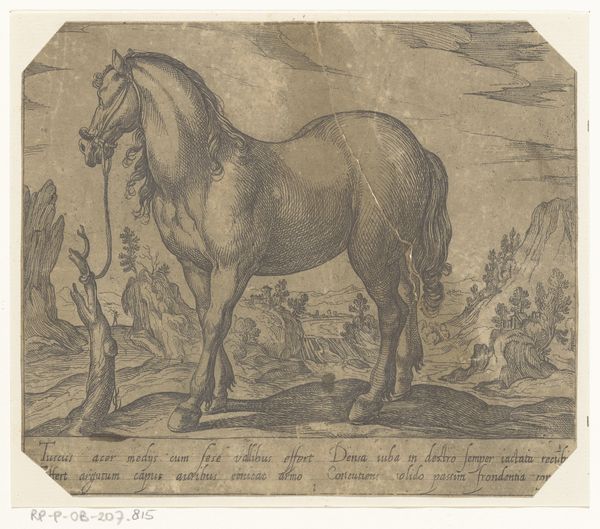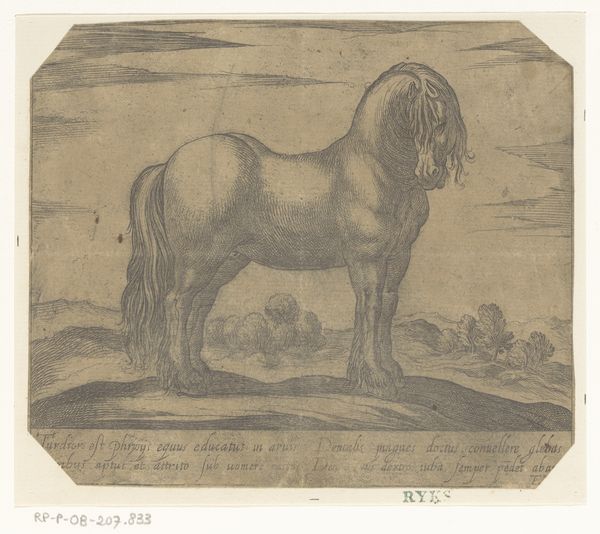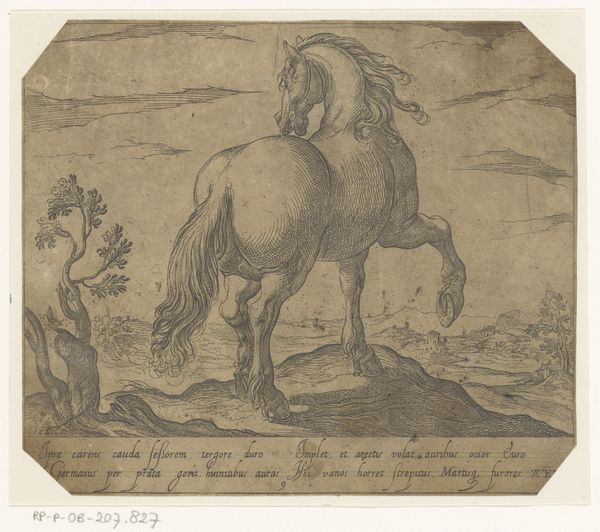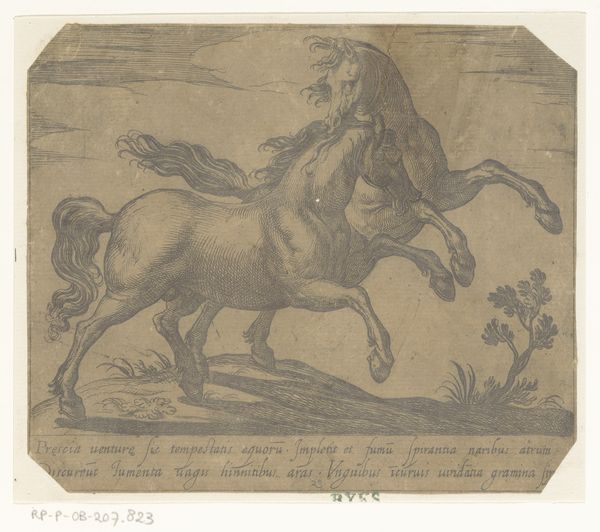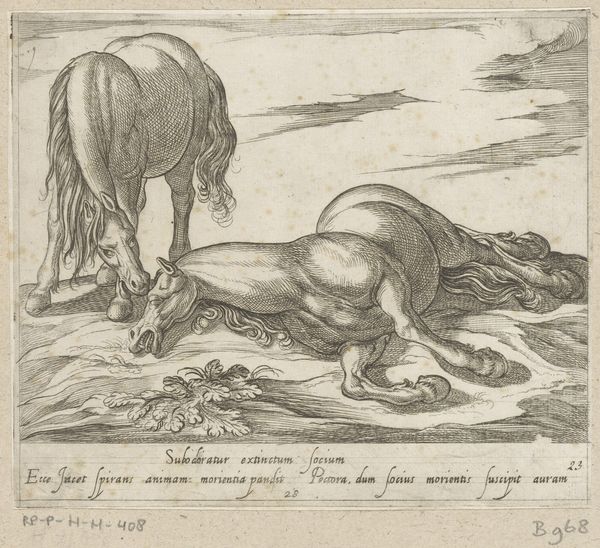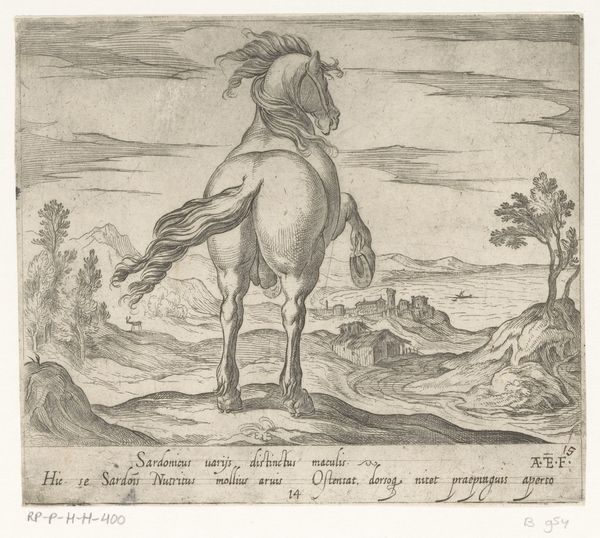
print, engraving
#
animal
# print
#
landscape
#
horse
#
italian-renaissance
#
engraving
Dimensions: height 141 mm, width 165 mm
Copyright: Rijks Museum: Open Domain
Antonio Tempesta etched "Paard een heuveltje aflopend van achteren gezien" in the late 16th or early 17th century. During Tempesta's era, the social hierarchy often mirrored the natural world in art, where each element had its place. Horses, like those from Tempesta’s time, often symbolize nobility, power, and virility, reflecting the values of the aristocratic class. The detailed rendering and muscular form can be seen as a reflection of the period's fascination with the idealization of nature and the human (or equine) form. Consider how the horse descends the hill, its posture suggesting both strength and submission to the landscape. This could be seen as an acknowledgement of humanity's place within the larger order of things. The landscape includes a tower and buildings and evokes a sense of both the natural and the constructed world. In its totality, the image resonates with a subtle tension between freedom and constraint.
Comments
No comments
Be the first to comment and join the conversation on the ultimate creative platform.
